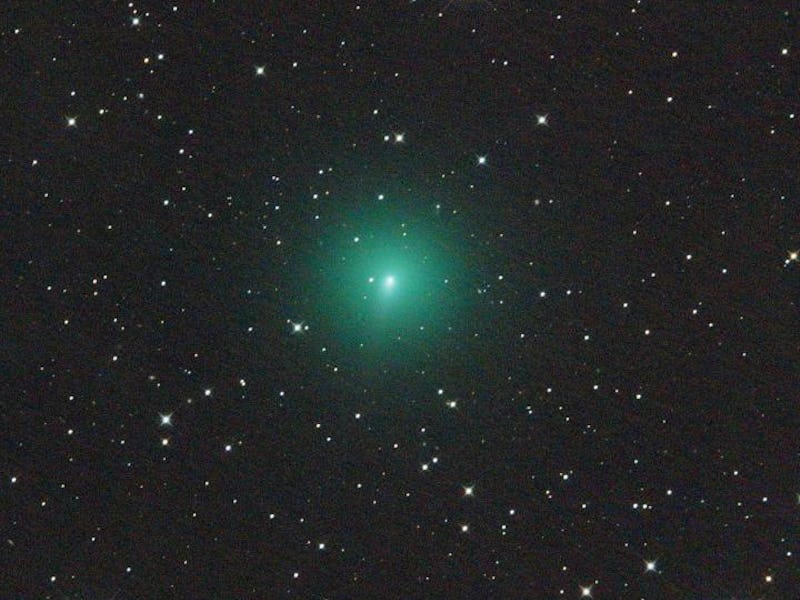The age of comet ATLAS holds clues to the Solar System's evolution
A new study found that the amount of carbon determines how old a comet is.

Comet ATLAS may have enjoyed a brief moment in the spotlight earlier this year when it was predicted to be one of the brightest comets sky gazers have seen in the past decade. But the fragile comet literally cracked under pressure, disintegrating into smaller fragments in April, 2020.
However, its brief encounter with our Solar System didn't go to waste as scientists believe that they can use ATLAS to determine the age of comets, thereby offering clues to the evolution of our planetary system and how it came to be.
The study, published this week in the Monthly Notices of the Royal Astronomical Society journal, suggests that the amount of carbon found in a comet's coma, the envelope that surrounds a comet's nucleus, indicates how old that comet is.
Comet ATLAS fell apart into smaller fragments as it approached the Sun.
Comet C/2019 Y4 (ATLAS) was discovered on December 28, 2019 on its way to the inner Solar System. When it was first observed, the comet was quite faint but continued to increase in brightness at a rate of 0.25 magnitude every day as it made its way closer to the Sun.
Comet ATLAS was scheduled for a heated rendezvous with the Sun on May 23, where it would have been as close as about 72 million miles to the star, that’s closer than planet Mercury is to the Sun. However, before it could make it, the comet fell apart.
"ATLAS was expected to be the brightest comet of 2020, visible from the Earth with a naked eye," Ekaterina Chornaya, a postgraduate at the School of Natural Sciences at Far Eastern Federal University, and co-author of the new study, said in a statement. "However, instead of observing the comet itself, we witnessed its disintegration."
Comets are icy bodies of frozen gas, rock and dust, material that likely dates back to the formation of the Solar System.
As comets travel closer to the Sun, the star's powerful gravity can weaken them and break them apart as they draw near.
However, due to comet ATLAS' proximity, astronomers were able to observe it before and after it disintegrated, and compare its composition.
By doing so, the researchers behind the new study noticed a spike in the amount of carbon found in the coma after it disintegrated.
Solar radiation tends to evaporate carbon and other material found in comets.
As a result, the study concluded that the more carbon is found in a comet's coma, the less time it has been around the Sun while the less carbon is found, the more time was spent around the Sun.
Since comets are made up of the same material as planets and other celestial objects in the Solar System, scientists study comets in order to learn more about the evolution of our galactic neighborhood. By analyzing the age and composition of comets, they can then determine how rocky planets like Earth formed as opposed to gas giants like Jupiter.
Abstract: We observe Comet C/2019 Y4 (ATLAS) before and after its disintegration while making polarimetric measurements over a wide range of phase angles. The disintegration event was marked with a dramatic growth of the positive polarization branch that is consistent with a large relative abundance of absorbing material of up to (96.5 ± 3.4) per cent. This polarization spike relaxed as the carbonaceous particles are preferentially swept from the coma due to solar radiation pressure. The observations suggest that the primordial material stored within comets are extremely rich in carbonaceous material. The pristine cometary material is processed by subsequent solar interactions, forming a refractory crust on the nucleus surface. Polarimetry provides a means of measuring the volume ratio of carbonaceous material, and hence the weathering that has occurred on the comet due to these interactions. The polarimetric response of Comet C/2019 Y4 (ATLAS) appears similar to that of Comet C/1995 O1 (Hale-Bopp), except on few epochs that are similar to that of Comet C/1996 B2 (Hyakutake).